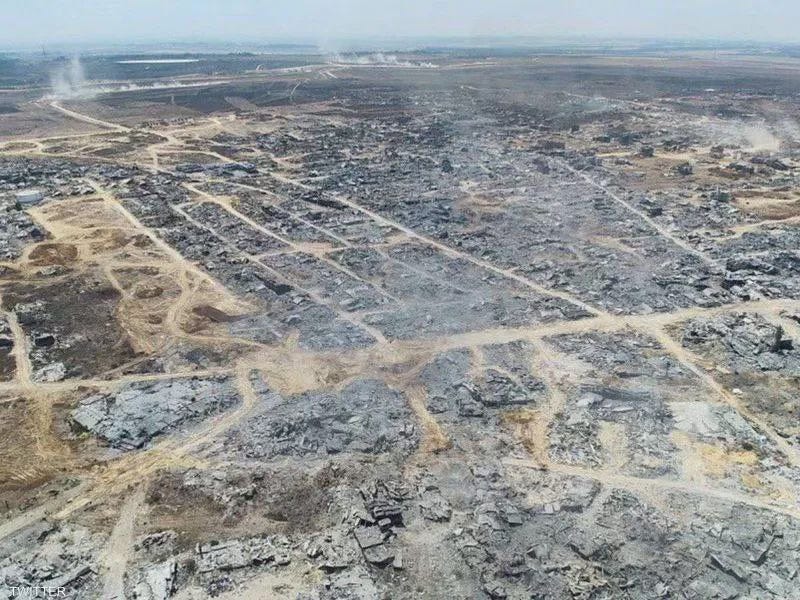
"This work only survives because you sustain it. What I cover isn't on the mainstream news. There are no ads here. No billionaire owners. We're at 2,891 members with 3 days left to get to 3,000 - 109 to go, that's 37 people a day. If you value independent, Gaza-first reporting that cannot be quietly deleted tomorrow, please become a member (monthly, annual, or founding). Your support keeps this coverage free for everyone who needs it."
"In July, I published a piece on drone footage postedwith pride by an Israeli outlet (YINONEWS, founded by former Knesset member Yinon Magal) bragging that the 8105 Battalion (Brigade 646), Paratroopers Reserves, Givati Engineering Corps, and a military rabbi " did not leave a single stone upon another" - and promised the same "throughout the entire Strip, God willing." They filmed it. Posted it. Celebrated it.Today's photograph is the receipt: Beit Hanoun - gone."
"This wasn't a blank on a map. It was a living corridor of Palestinian history and culture. Just west of town in the year 1239, Ayyubid forces defeated the Crusaders at Umm al-Nasser and raised the mosque that bears its name. Under the Mamluks, Beit Hanoun served as a strategic postal station. During the Ottoman era it was a thriving agricultural community - wheat, barley, olives, citrus."
Independent Gaza-first reporting relies on member support, with 2,891 members and three days to reach a 3,000-member goal. A single aerial photograph of Beit Hanoun shows total destruction rather than a battlefield, depicting a city flattened to ash. Drone footage from an Israeli outlet publicly celebrated the obliteration, with units boasting they "did not leave a single stone upon another" and promising similar actions across the Strip. Beit Hanoun contained centuries of Palestinian history and culture — Ayyubid, Mamluk, Ottoman eras, agricultural life, and post-1948 resettlement — and hosted schools, markets, prayer, and resilient communities. The image represents the destruction of a city and the expulsion of its people.
Read at Thenorthstar
Unable to calculate read time
Collection
[
|
...
]